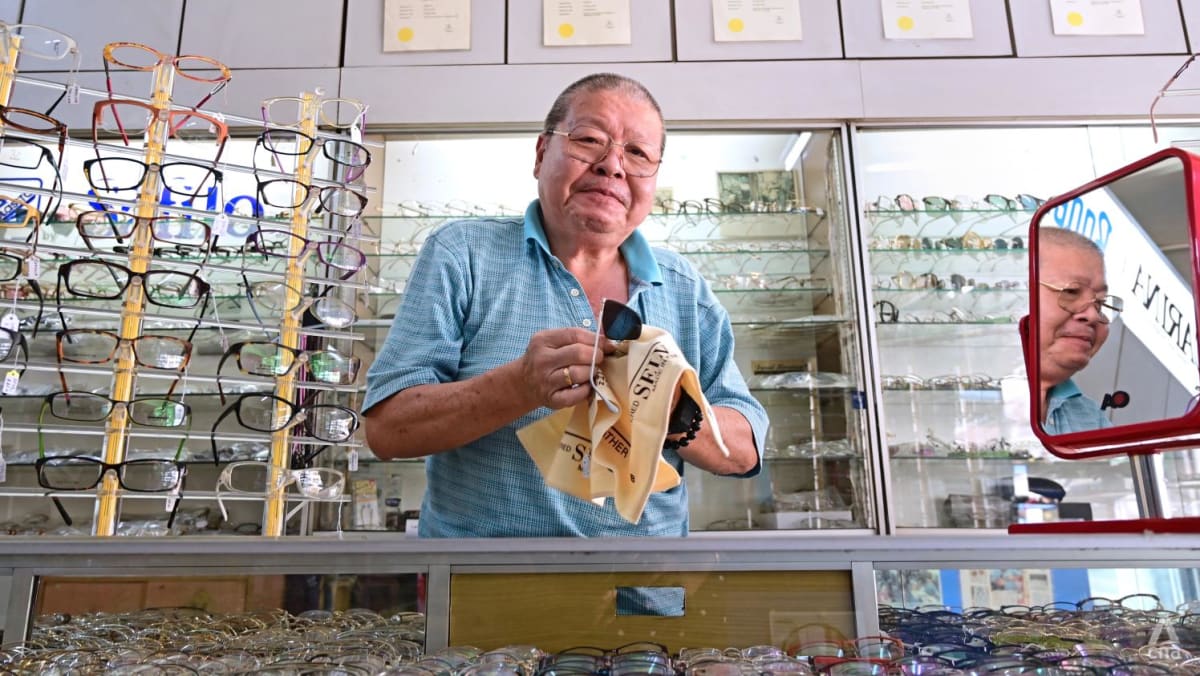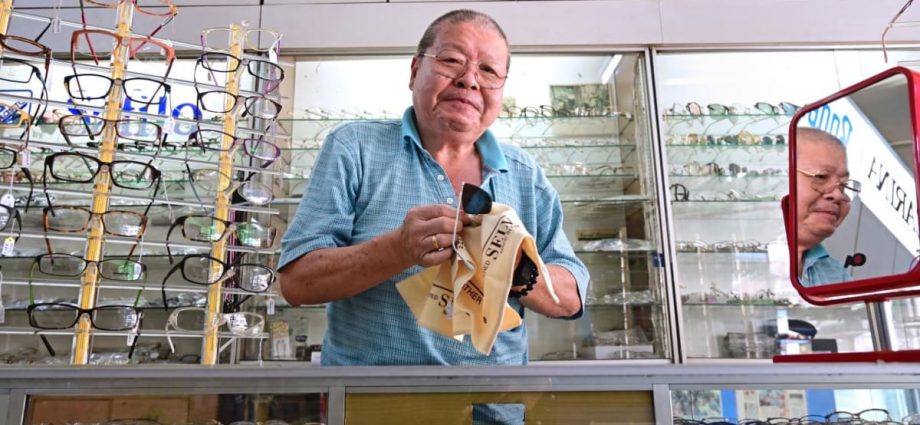
Tour guides and musicians fancied these designs, which took at least half an hour to customise. Even though well-meaning friends urged Mr Lim to charge a premium for his craft, their words fell on deaf ears. “Can sell okay lah,” he quipped.
Importantly, tweaking an original model in five or six ways gave customers more styles to choose from, helping inventory to move more quickly. However, the reshaping of spectacle frames has since been automated. Mr Lim’s artistry makes an appearance only when there’s a technical fault or urgent request.
But that isn’t the only lost art here. The optical shop used to dye sunglasses manually, too. Customers would choose from over 30 lens colour samples, and Mr Lim would deliver in two days. However, he feels no nostalgia for the painstaking process.
“It wasn’t lucrative. Sometimes, you can’t get the right shade, and you have to start over. I warned customers that if they want it quickly, it will not be perfect. We can probably meet 85 per cent of their expectations.”
Nailing his customers’ requests, especially for gradient glasses, was a back-breaking task involving toxic chemicals. Naturally, it is now outsourced to laboratories.
LONGTIME REGULARS AND STAR APPEARANCES
Until the late 2000s, spectacle frames sat in crowded display cases, retrieved by opticians only when something catches our eye. These days, open-concept stores offer a far more autonomous experience. Customers, even those with perfect eyesight, can try on a dizzying variety without speaking a word to the optician. It’s an introvert’s dream come true.
For the same reason, some patrons feel uneasy when Mr Lim tries to assist them. Meanwhile, others appreciate his service and recommendations – the whole nine yards. Selecting a pair of spectacle frames with no expertise can be dicey, he said. For example, semi-rimless glasses may not suit highly myopic customers. Because lens thickness increases with prescription, the lens may end up looking disproportionate to the frame.
“Most shops out there will not tell you. They would rather not because you will have second thoughts. With my customers, I usually overstate the expected thickness so I have some buffer to work with. If I can achieve a thinner lens, I’m happy and they’re happy.”

